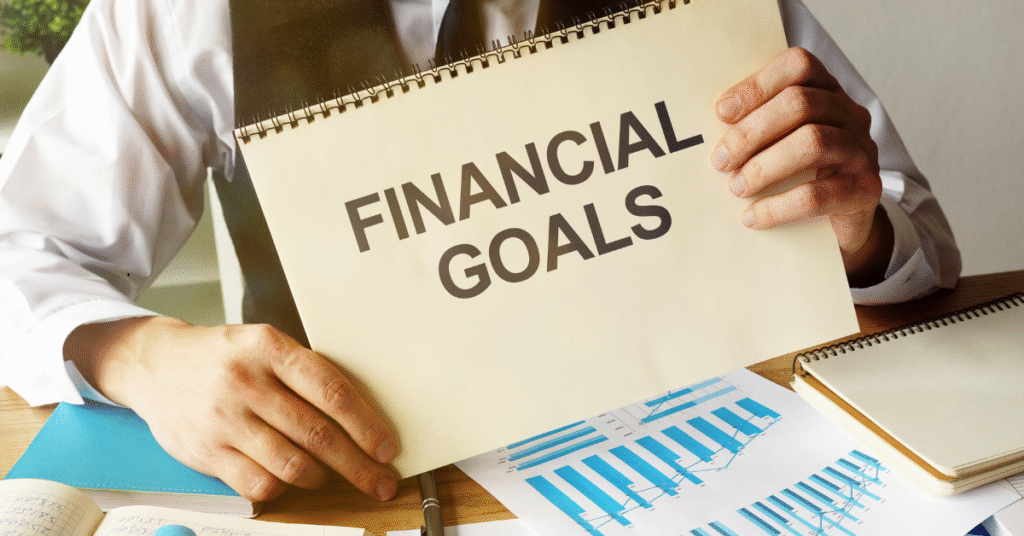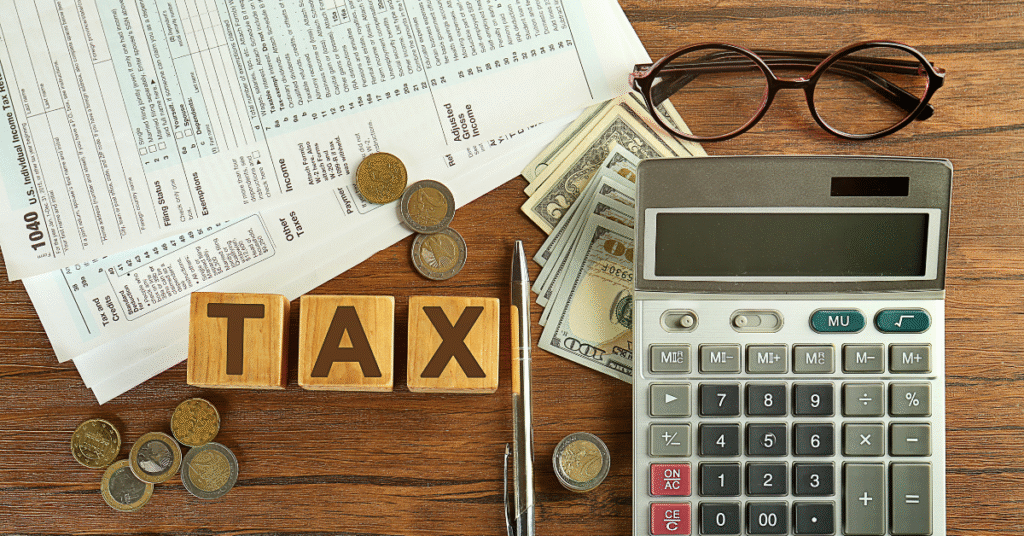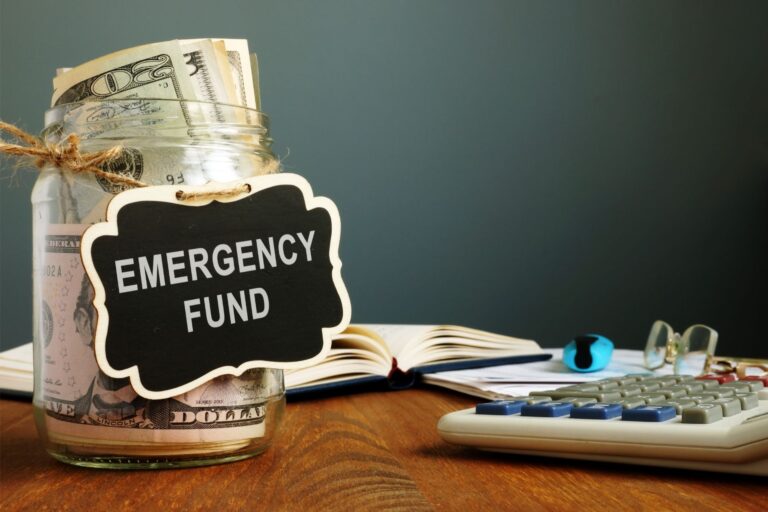Financial Checklist For The New Year: Your Complete Guide To Money Success

When January rolls around, everyone’s talking about gym memberships and eating more kale, but how many people are actually sitting down to sort out their money situation? Yeah, I thought so.
Here’s the thing: your financial health deserves just as much attention as those New Year’s resolutions you’ll probably abandon by February (no judgment, we’ve all been there).
Getting your money organized at the start of the year isn’t just some boring adult task. It’s literally the difference between stressing over bills every month and actually having breathing room in your budget.
I’ve spent years helping people untangle their financial messes, and trust me, the ones who start the year with a solid plan? They’re the ones who end up winning. So grab your coffee, get comfortable, and let’s walk through everything you need to get your finances in shape for the year ahead.
Why Do You Need A Financial Checklist
Before we jump into the nitty-gritty, let’s talk about why you should even care about creating a financial checklist. Because honestly, it might seem like extra work you don’t need, right?
Wrong. Here’s why this matters more than you think.
1. Clarity And Focus
Ever tried driving somewhere new without GPS? That’s basically what managing your money without a plan feels like. You’re just wandering around hoping you’ll somehow end up in the right place.
A financial checklist gives you that roadmap. You’ll know exactly where your money’s going, what you’re working toward, and when you need to make moves. No more guessing games or surprise overdraft fees that make you want to scream into a pillow.
When you can see your goals written down, they become real. They’re not just vague wishes floating around in your head anymore.
2. Proactive Planning
Here’s something I learned the hard way: reactive money management is expensive. When you’re constantly putting out fires, you end up paying more in fees, interest, and stress-induced impulse purchases.
Having a checklist means you’re making decisions before problems show up at your door. You’re setting aside money for car repairs before your transmission dies. You’re building savings before you lose your job. You’re reviewing insurance before something terrible happens.
Being proactive isn’t about being paranoid. It’s about being smart enough to know that life happens, and you’d rather be ready for it.
3. Reduced Stress
Can we talk about money stress for a second? That pit in your stomach when you check your bank account? The anxiety that keeps you up at 3 AM wondering how you’ll pay off your credit cards?
A solid financial plan doesn’t magically make all your problems disappear, but it does something almost as good. It gives you control. When you have a written strategy for tackling your debt, building savings, and reaching your goals, that overwhelming feeling starts to fade.
You’re not ignoring your problems anymore. You’re facing them head-on with a plan, and that makes all the difference. Studies from the American Psychological Association consistently show that financial stress is one of the top sources of anxiety. Taking control reduces that burden significantly.
4. Accountability
Look, we all need accountability. Left to our own devices, most of us would spend money on random stuff and hope it all works out somehow (spoiler: it doesn’t).
Your financial checklist becomes your accountability partner. It’s that friend who reminds you of your goals when you’re about to make a questionable purchase. Every time you review it, you’re checking in with yourself and your progress.
Hit a roadblock? Your checklist helps you figure out what went wrong and how to adjust. It’s not about beating yourself up. It’s about staying honest and keeping yourself on track.
5. Improved Financial Health
This is the big one. Everything else leads to this: better financial health overall.
When you consistently review your finances, set realistic goals, and actually work toward them, amazing things happen. Your debt goes down. Your savings go up. Your credit score improves. You start having options instead of feeling trapped.
Financial health isn’t about being rich. It’s about having stability, security, and the freedom to make choices that align with your values. That’s what we’re really after here.
Financial Checklist For The New Year
Are you ready to elevate your finances in the new year? Here are vital things that should be a part of your financial plan:
1. Create A Personal Financial Inventory

Okay, so this first step might sound boring, but stick with me. You can’t fix what you don’t understand, and you can’t plan for the future if you don’t know where you’re starting from.
Think of this like taking a financial selfie. Not the cute, filtered kind. The honest, unflattering, this-is-actually-what-I-look-like kind. It might not be pretty, but it’s necessary.
List All Your Assets
Start with the good stuff. What do you actually own that has value? I’m talking about:
- Retirement accounts like your 401(k) or IRA
- Investment accounts and brokerage holdings
- Savings accounts including that emergency fund you’ve been building (or need to start)
- Real estate equity if you own property
- Education savings like 529 plans for your kids
- Valuable possessions such as jewelry, collectibles, or that vintage guitar gathering dust
Write down the current value of each item. Yeah, it takes time. Do it anyway. You need to see the complete picture, not just bits and pieces.
List All Your Debts
Now for the less fun part. Time to face those debts head-on. Grab every statement and list out:
- Credit card balances with their interest rates (this one usually hurts)
- Student loans including the type and repayment terms
- Auto loans and how much you still owe
- Mortgage balance if you’re a homeowner
- Personal loans from banks or, let’s be real, family members
- Medical debt that’s been hanging around
Don’t skip anything because it’s embarrassing or overwhelming. The number doesn’t get smaller by ignoring it. Trust me on this one.
Calculate Your Debt-To-Income Ratio
This number tells you how much of your monthly income goes toward debt payments. Lenders look at this when you apply for loans, but more importantly, it shows you if you’re drowning in debt or managing okay.
The math is simple: divide your total monthly debt payments by your gross monthly income, then multiply by 100 to get a percentage. If you’re above 43%, you’re in the danger zone. Most financial experts recommend keeping it under 36%.
Check Your Credit Score
Your credit score is basically your financial reputation score. It affects everything from loan approvals to interest rates to sometimes even job applications.
Pull your credit report from AnnualCreditReport.com (it’s free once a year from each bureau). Look for errors, fraudulent accounts, or anything that seems off. Mistakes happen more often than you’d think, and they can tank your score for no good reason.
If your score is lower than you’d like, don’t panic. It’s fixable. But you need to know where you stand first.
Track Your Expenses
This is where things get real. List out everything you spend money on. Everything. Your fixed expenses like rent and insurance are easy. The variable ones? That’s where most people discover they’re bleeding money.
Look at your bank and credit card statements from the last three months. Where’s your money actually going? Those $5 coffee runs add up. So do subscription services you forgot you had. And don’t even get me started on food delivery apps.
I know this seems tedious. But finding $200 a month in wasteful spending? That’s $2,400 a year you could redirect toward debt or savings. Suddenly it doesn’t seem so tedious anymore, does it?
2. Set Financial Goals

Now that you know where you stand, it’s time to figure out where you want to go. And no, “have more money” isn’t a goal. That’s a wish. Goals are specific, measurable, and have deadlines.
Let’s break this down into categories that actually make sense.
Short-Term Goals (Next 12 Months)
These are your immediate priorities. The stuff you can actually accomplish within the year. Think practical and achievable:
Build an emergency fund. Start with $1,000 if you’re new to this. That covers most minor emergencies without derailing your entire financial life. Eventually, you want three to six months of expenses saved, but don’t let that intimidate you. Start small.
Create and stick to a budget. I know, I know. Budgeting sounds about as fun as watching paint dry. But it’s literally just telling your money where to go instead of wondering where it went. Apps like Mint or YNAB make this way easier than spreadsheets.
Pay off high-interest credit card debt. That 24% APR is killing you slowly. Make this a priority. Use the avalanche method (highest interest first) or snowball method (smallest balance first). Pick whichever keeps you motivated.
Increase your credit score. Pay bills on time, keep credit utilization under 30%, and dispute any errors on your report. These simple moves can boost your score significantly.
Mid-Term Goals (1-5 Years)
These goals take more time and planning, but they’re still totally achievable:
Save for a down payment. Whether it’s a house or a car, having a solid down payment saves you thousands in interest over the life of the loan. Plus, it gives you better loan terms and more negotiating power.
Get proper insurance coverage. Life insurance if you have dependents. Disability insurance to protect your income. Review your health insurance during open enrollment to make sure you’re not overpaying or underinsured.
Build a college fund. If you have kids, a 529 plan offers tax advantages for education savings. Even $50 a month adds up over time thanks to compound interest.
Renovate or upgrade your living situation. Maybe you need a bigger place, or your current home needs major repairs. Planning ahead means you won’t have to put it all on credit cards when the time comes.
Long-Term Goals (5+ Years)
This is your future self we’re talking about. The one who will either thank you or curse you for the decisions you make today.
Retirement planning. This is the big kahuna. Most financial experts suggest saving 15-20% of your income for retirement. Sounds impossible? Start with whatever you can and increase it by 1% every year. You won’t even notice, but future you will be grateful.
If your employer offers a 401(k) match, contribute at least enough to get the full match. That’s literally free money you’re leaving on the table otherwise. It’s like refusing a raise, which would be ridiculous.
Build substantial wealth. This goes beyond just retirement. We’re talking about investments, real estate, maybe starting a business. Wealth building creates options and security that a paycheck alone can’t provide.
The key with all these goals? Write them down. Be specific. “Save more money” is vague and useless. “Save $5,000 for an emergency fund by December 31st” is a goal you can actually work toward and measure.
3. Review Your Retirement Savings

Let’s talk about retirement for a minute. I know it seems far away, especially if you’re young. But here’s the brutal truth: Social Security probably won’t be enough to live on, and it might not even exist in its current form by the time you retire.
Your retirement is your responsibility. Nobody else is going to handle this for you. So let’s make sure you’re set up properly.
Understand Your Retirement Account Options
You’ve got choices here, and picking the right one matters more than you might think.
Traditional IRA: You get a tax deduction now, but you’ll pay taxes when you withdraw the money in retirement. This works great if you think you’ll be in a lower tax bracket when you retire.
Roth IRA: You pay taxes now, but withdrawals in retirement are tax-free. This is amazing if you’re young or expect to be in a higher tax bracket later. Plus, you can withdraw your contributions (not earnings) anytime without penalty, which offers some flexibility.
401(k) or 403(b): Employer-sponsored plans that often come with matching contributions. Always, always, always get the full match. It’s literally the best return on investment you’ll ever get.
Consider Converting Accounts
Sometimes it makes sense to convert a traditional IRA to a Roth IRA. You’ll pay taxes on the conversion amount, but then all future growth is tax-free. This is especially smart if:
- You’re in a low-income year (maybe you’re between jobs or took time off)
- You’re early in your career and your income is lower than it will be later
- You expect tax rates to increase in the future (spoiler: they probably will)
The same logic applies to 401(k) conversions. Many plans now offer Roth 401(k) options, which combine the high contribution limits of a 401(k) with the tax-free growth of a Roth.
Roll Over Old Retirement Accounts
Changed jobs and left your 401(k) behind? You’re not alone, but you should fix that. Old 401(k) accounts are easy to forget about, and you’re probably paying higher fees than necessary.
Rolling it over to an IRA gives you more investment options and usually lower fees. Plus, everything’s in one place, which makes it way easier to manage and track your progress.
Maximize Your Contributions
For 2024, you can contribute up to $23,000 to a 401(k) if you’re under 50, or $30,500 if you’re 50 or older. IRA limits are $7,000 and $8,000 respectively.
Can’t max out? That’s okay. Contribute what you can and try to increase it by at least 1% each year. Got a raise? Bump up your retirement contribution before you get used to the extra money in your paycheck. You won’t miss what you never had.
4. Review Your Investments
Investing isn’t just for rich people or finance bros. It’s for anyone who wants their money to work for them instead of the other way around.
But here’s what nobody tells you: buying investments is only half the battle. You need to actually review and manage them, or you’re basically just gambling with extra steps.
Assess Your Current Portfolio
When’s the last time you actually looked at your investments? And I mean really looked, not just glanced at the balance and hoped it went up.
Pull up your accounts and ask yourself:
- What am I actually invested in? (If you don’t know, that’s a problem)
- How have these investments performed over the past year? Five years?
- Do these investments still align with my goals and risk tolerance?
- Am I paying reasonable fees, or are fund managers getting rich off my money?
If your portfolio is heavily weighted in one sector (like tech stocks) and that sector tanks, your entire investment strategy goes down with it. That’s why diversification matters so much.
Adjust For Economic Changes
The economy shifts constantly. Interest rates go up and down. Inflation happens. Recessions come and go. Your investment strategy should adapt to these changes.
When stocks are volatile, adding some bonds or real estate investment trusts (REITs) can smooth out the bumps. When interest rates are high, bonds become more attractive. When inflation is climbing, real assets like real estate and commodities tend to hold their value better.
This doesn’t mean panic-selling every time the market dips. That’s actually the worst thing you can do. But it does mean periodically checking if your asset allocation still makes sense given current conditions.
Consider Your Time Horizon
How long until you need this money? That answer should drive your investment choices.
If you’re 25 and investing for retirement, you can handle more risk because you have decades to recover from market downturns. If you’re 60 and planning to retire in five years, you probably want to shift toward more conservative investments.
This is called a glide path, and most target-date retirement funds do this automatically. They start aggressive when you’re young and gradually become more conservative as you approach retirement.
5. Balance Your Portfolio
Here’s something that trips up a lot of people: even if you start with a perfectly balanced portfolio, it won’t stay that way. Some investments grow faster than others, which throws off your original allocation.
That’s where rebalancing comes in, and it’s way more important than most people realize.
Why Rebalancing Matters
Let’s say you started with 70% stocks and 30% bonds. After a great year in the stock market, you might now have 85% stocks and 15% bonds. Congrats on the gains! But now you’re taking on way more risk than you intended.
Rebalancing means selling some of those stocks and buying more bonds to get back to your target allocation. It feels weird to sell winners and buy losers, but it’s actually a disciplined way to “buy low and sell high” without trying to time the market.
How Often Should You Rebalance
Most experts recommend rebalancing once or twice a year. More than that and you’re probably overreacting to normal market fluctuations. Less than that and you might drift too far from your target allocation.
Some people rebalance on a schedule (like every January). Others rebalance when their allocation drifts more than 5% from their target. Both approaches work fine. Pick whichever one you’ll actually stick to.
Minimize Costs And Taxes
Here’s where it gets a bit technical, but stay with me because this can save you serious money.
Rebalancing in tax-advantaged accounts like IRAs and 401(k)s is easy because you don’t owe taxes on the transactions. But rebalancing in regular taxable accounts can trigger capital gains taxes.
Smart strategies include:
- Using new contributions to buy underweighted assets instead of selling overweighted ones
- Rebalancing in tax-advantaged accounts first
- Harvesting tax losses to offset gains
- Holding investments for more than a year to qualify for lower long-term capital gains rates
Also, pay attention to fund fees. If you’re paying more than 0.5% in expense ratios for index funds, you’re probably overpaying. Those fees compound over time and can cost you tens of thousands of dollars over a lifetime of investing.
6. Review Your Taxes For Investments

Taxes and investments go together like… well, like two things nobody wants to think about. But ignoring the tax implications of your investment decisions is like throwing money in the trash.
Let’s make sure you’re not paying more taxes than necessary.
Understand Capital Gains Taxes
When you sell an investment for a profit, Uncle Sam wants his cut. How much depends on how long you held the investment:
Short-term capital gains (held less than a year) are taxed as ordinary income. Depending on your tax bracket, that could be as high as 37%. Ouch.
Long-term capital gains (held more than a year) get preferential tax treatment. Most people pay 15%, and some pay 0% or 20% depending on their income. This is why buy-and-hold strategies often beat active trading from a tax perspective.
Use Tax-Loss Harvesting
Here’s a silver lining to investment losses: you can use them to offset gains and reduce your tax bill.
Tax-loss harvesting means selling investments that have lost value before the end of the year. You can use those losses to offset any capital gains you realized, plus up to $3,000 of ordinary income. Any excess losses carry forward to future years.
Just watch out for the wash-sale rule. If you sell an investment at a loss and buy the same or a “substantially identical” investment within 30 days, the IRS won’t let you claim the loss. Wait 31 days or buy something similar but not identical.
Make Smart Charitable Donations
If you’re charitably inclined, donating appreciated securities instead of cash is a brilliant move. You get to deduct the full market value of the donation, and you never pay capital gains taxes on the appreciation.
Let’s say you bought stock for $1,000 and it’s now worth $5,000. If you sell it and donate the cash, you’ll owe capital gains tax on the $4,000 profit. But if you donate the stock directly to a charity, you get a $5,000 deduction and pay zero capital gains tax. The charity gets the full $5,000 because they’re tax-exempt.
This strategy works especially well if you’re facing a high-income year and want to reduce your tax liability while supporting causes you care about.
Consider Gifting Strategies
You can give up to $18,000 per person per year (as of 2024) without triggering gift tax reporting requirements. If you have adult children or family members in lower tax brackets, gifting appreciated assets to them can be smart.
They can sell the assets and pay capital gains taxes at their lower rate (possibly even 0% if their income is low enough). This keeps the money in the family while minimizing the overall tax burden.
7. Build Your Emergency Plan

Let’s talk about something that most people ignore until it’s too late: emergency preparedness. And no, I’m not talking about zombie apocalypse stuff (though that would be interesting). I’m talking about boring, practical, life-saving financial emergency planning.
Why Emergency Funds Are Non-Negotiable
Life has this annoying habit of throwing curveballs right when you can’t afford them. Your car breaks down. You need an emergency root canal. Your company does layoffs. Your roof starts leaking.
Without an emergency fund, these situations force you into bad decisions. You max out credit cards at 24% interest. You take out payday loans that trap you in a cycle of debt. You raid your retirement accounts and pay penalties and taxes.
An emergency fund is your financial cushion. It’s the difference between a temporary setback and a financial disaster.
How Much Should You Save
The standard advice is three to six months of living expenses. But that range is huge, and the right amount depends on your situation:
Three months might be enough if you have a stable job, good health insurance, a working spouse, and no dependents. Basically, if your life is pretty secure and predictable.
Six months or more makes sense if you’re self-employed, work in a volatile industry, are the sole income earner, have health issues, or just want extra peace of mind.
Don’t let the big number intimidate you. Start with a goal of $1,000. That covers most minor emergencies. Then build toward one month of expenses, then three, then six. Progress, not perfection.
Where To Keep Your Emergency Fund
This money needs to be safe and accessible. That means:
- High-yield savings accounts at online banks like Ally, Marcus, or Discover that pay decent interest
- Money market accounts that offer similar benefits with check-writing privileges
- Short-term CDs if you want slightly higher returns and can ladder them for liquidity
What you should NOT do: invest your emergency fund in stocks, crypto, or anything volatile. The whole point is that it’s there when you need it, not down 30% because the market had a bad month.
Automate Your Savings
Here’s the secret to actually building an emergency fund: make it automatic. Set up a direct deposit or automatic transfer from your checking account to your emergency fund every payday.
Even $25 per paycheck adds up. That’s $650 a year if you’re paid biweekly. Not earth-shattering, but it’s $650 more than you’d have otherwise. Increase it whenever you can, and before you know it, you’ve got a solid safety net.
8. Prioritize Future Savings

Once you’ve got your emergency fund sorted, it’s time to think bigger. How do you squeeze more savings out of your budget without feeling like you’re living on ramen and regret?
The answer isn’t earning more money (though that helps). It’s getting smarter about where your money goes.
Cut The Big Expenses
Everyone focuses on cutting out lattes and avocado toast. Sure, small expenses add up, but you know what adds up faster? Big expenses.
Refinance your mortgage. If interest rates have dropped since you bought your house, refinancing could save you hundreds per month. Even a 1% rate reduction on a $300,000 mortgage saves you around $200 monthly.
Shop around for insurance. Most people set it and forget it with insurance, which is exactly what insurance companies want. Spend an hour comparing rates on PolicyGenius or similar sites. You might save $500+ per year on car and home insurance combined.
Negotiate your bills. Call your internet, phone, and cable providers and ask for a better rate. Mention you’re considering switching to a competitor. You’d be surprised how often they’ll lower your bill just to keep you.
Reduce Food Waste
Americans waste about $1,500 worth of food per year on average. That’s insane. Your fridge isn’t a trash can with a light in it.
Plan your meals, make a shopping list, and stick to it. Use leftovers creatively instead of letting them rot in the back of your fridge. Freeze things before they go bad. Cook in batches and portion out meals for the week.
These simple habits can easily save you $100+ per month. That’s $1,200 a year you can redirect toward savings or debt payoff.
Optimize Your Savings Accounts
If your savings account pays less than 4% interest right now (as of 2024), you’re leaving money on the table. Online banks consistently offer much higher rates than traditional brick-and-mortar banks.
Moving $10,000 from a bank paying 0.01% to one paying 4.5% earns you an extra $449 per year. That’s free money just for keeping your savings in a better place.
Ditch Unnecessary Subscriptions
Pull up your bank and credit card statements. Count how many subscription services you’re paying for. Now count how many you actually use regularly.
That gym membership you haven’t used in six months? Cancel it. Netflix, Hulu, Disney+, HBO Max, and three other streaming services? Pick one or two and rotate them. That meal kit service that sounded great but you never have time for? Gone.
Most people can easily find $50-100 per month in subscription bloat. That’s another $600-1,200 per year for your savings goals.
Reduce Energy Costs
Your utility bills are probably higher than they need to be. Simple changes make a real difference:
- Switch to LED bulbs (they use 75% less energy than incandescent)
- Use a programmable thermostat to reduce heating and cooling when you’re not home
- Unplug devices that draw phantom power
- Seal air leaks around windows and doors
- Use ceiling fans to reduce AC usage
These changes can cut your energy bill by 20-30%, which might save you $50-100 monthly depending on where you live.
9. Don’t Work Alone
Here’s something I wish someone had told me earlier: managing your finances doesn’t have to be a solo mission. In fact, it probably shouldn’t be.
Find An Accountability Partner
Tell someone about your financial goals. A friend, family member, or partner who will check in with you and keep you honest.
It’s way easier to blow $200 on random stuff when nobody knows about it. But when you know someone’s going to ask how your savings goal is going? Suddenly that impulse purchase doesn’t seem so appealing.
Your accountability partner doesn’t need to know every detail of your finances (unless you want them to). They just need to know your goals and be willing to regularly ask about your progress.
Use Financial Planning Apps
Technology makes money management so much easier than it used to be. Take advantage of it.
Mint is free and tracks all your accounts in one place, categorizes spending, and sends alerts when you’re overspending.
YNAB (You Need A Budget) costs money but teaches you zero-based budgeting, which is incredibly powerful if you stick with it.
Personal Capital is great for tracking investments and net worth, with tools for retirement planning.
PocketGuard shows you how much you have available to spend after bills and savings, which helps prevent overspending.
Pick one and actually use it. These apps only work if you check them regularly and adjust your behavior based on what they’re telling you.
Consider A Financial Advisor
If your financial situation is complex (multiple income sources, significant investments, business ownership, complicated tax situations), hiring a professional might be worth it.
Look for a fee-only fiduciary advisor who’s legally required to act in your best interest. Avoid commission-based advisors who make money by selling you products you might not need.
Yes, it costs money. But a good advisor can often save or make you more than they cost through tax strategies, investment optimization, and helping you avoid expensive mistakes.
Final Thoughts
Alright, let’s wrap this up because I know that was a lot of information. Here’s the bottom line:
Your financial health doesn’t improve by accident. It improves through intentional planning and consistent action. This financial checklist gives you the framework to make that happen.
Start by taking inventory of where you stand right now. All your assets, all your debts, your credit score, your spending patterns. No judgment, just facts.
Then set specific, measurable goals for the short term, mid term, and long term. Write them down. Make them real.
Review your retirement savings and make sure you’re on track. Future you is counting on present you to make smart decisions.
Look at your investments and make sure they still align with your goals and risk tolerance. Rebalance when necessary, and be smart about taxes.
Find ways to save more by cutting unnecessary expenses and optimizing the big stuff like housing, transportation, and insurance.
And finally, don’t try to do this all alone. Get support, use technology, and consider professional help if you need it.








